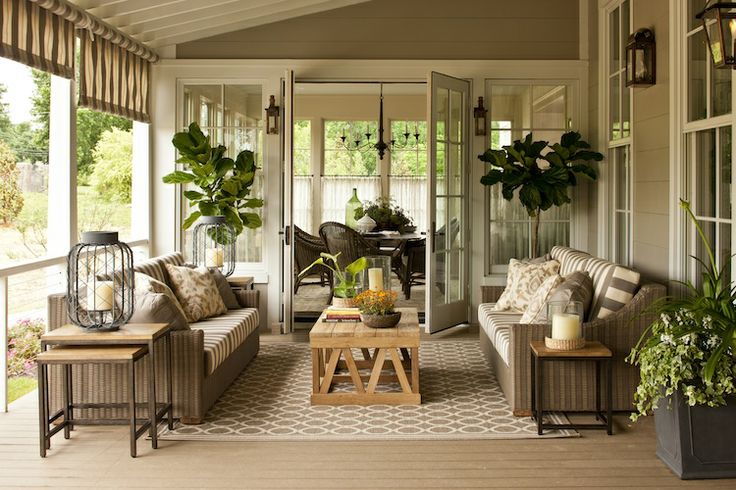A dining room serves as a place to eat, a bedroom serves as a place to sleep, and a bathroom serves as a place to bathe. Although how you design your outside space is largely up to you, there are some fundamental guidelines to follow. Among them are the following:
Establishing a focal point for an outdoor room is an important aspect of smart design. Focal points direct the eye to a more appealing section of the space and away from a less appealing one. They can also serve as interesting places of interest.
Use urns or vases with tall ornamental grasses or patio trees to make use of vertical space if your outdoor room has a wall or two, or even a proposed wall.
Use urns or vases with tall decorative grasses or patio trees, climbing vines, or especially shrubs to take advantage of vertical space if your outdoor room has one or two walls or even a proposed wall. Consider employing chandeliers, wind chimes, pedestals, and high pots in addition to hanging outdoor lights.
If you’re stumped on how to decorate, think about the architectural style of your home, its proportions, and the outside materials it’s made of. Look around the house for patterns and elements that you may incorporate in your outside space. For more information, click here and know the best value offered for you.
1. Forgetting That It’s Outside, Not Inside
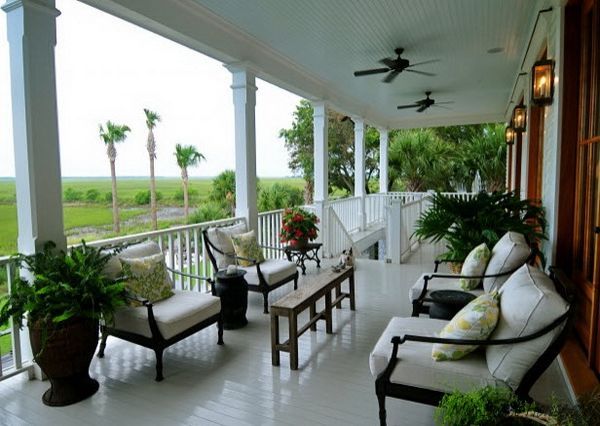
Some overly zealous designers lose sight of the fact that they are adorning an outside area. Perhaps you’ve seen a patio where the living room sofa, lounger, coffee table, and even fake plants have been pushed outside. Alternatively, the old sofa from the den has been demoted to the patio or backyard. Don’t even consider it.
It’s always a good idea to strive for a seamless transition between your interior and exterior spaces, but choosing the same (or extremely similar) furniture goes too far.
2. Excessive or insufficient furniture
You’re overjoyed to have a designated outside space. You’ve gathered your favorite patio furniture—that Brown Jordan Tamiami set you found at an estate sale last year, together with Grandma’s porch glider, your husband’s beloved couch from the deck of his previous frat house, and the kids’ plastic dining set—inside those three-or-so outside walls. It’s no surprise that it seems more like a patio furniture yard sale than a well-coordinated, well-arranged outdoor space.
You’re overjoyed to have a designated outside space. You’ve gathered your favorite patio furniture—that Brown Jordan Tamiami set you found at an estate sale last year, together with Grandma’s porch glider, your husband’s beloved couch from the deck of his previous frat house, and the kids’ plastic dining set—inside those three-or-so outside walls. It’s no surprise that it seems more like a patio furniture yard sale than a well-coordinated, well-arranged outdoor space.
3. Nonexistence and Minimalism
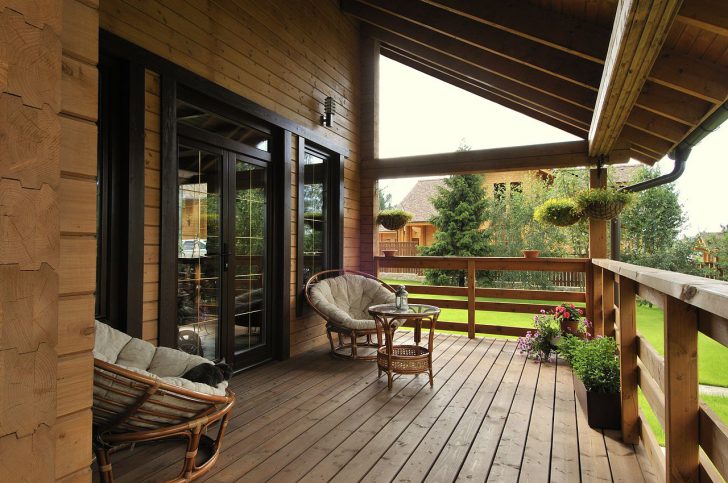
Many people prefer the KonMari approach or the simplicity of minimalism in our congested worlds. This can be great; just remember to add a personal touch, such as a piece of pottery, a plant, or a pillow.
If you don’t have any accessories or don’t want to decorate, this is the place to
You set it up in your outdoor room when you get home, take a few steps back, and wonder what’s missing.
Accessories. And by that, we don’t mean furniture that can be moved from the living room to the backyard. Outdoor equipment should be waterproof and resistant to the elements, though you should bring them inside or undercover during the offseason or severe weather events such as tornadoes, hurricanes, and storms.
The following are examples of outdoor decor and accessories:
- Sculptures in the garden
- Urns, urns, urns, urns, urns,
- Chimes in the wind
- Ornaments to hang
- Art for the outdoors
- Cushions and pillows
- Candles
- Fixtures for lighting
Of course, an outdoor room with too many furnishings can become cluttered, overwhelming, confused, and overbearing.
4. There Are No Plants
You thought you had thought of everything when designing an outdoor room: a great deep-seating set, a few occasional tables, and a container or two. What appears to be missing? What about some greenery, such as potted plants, patio trees, a dish garden, or perhaps a vase filled with cut roses from neighboring bushes?
Plants can serve to soften the feel of outdoor space. You can also add a sweet-smelling plumeria or gardenia to the mix if you choose wisely, for a delightful evening experience when gentle winds kick up the scent.
5. Improper Furniture Layout
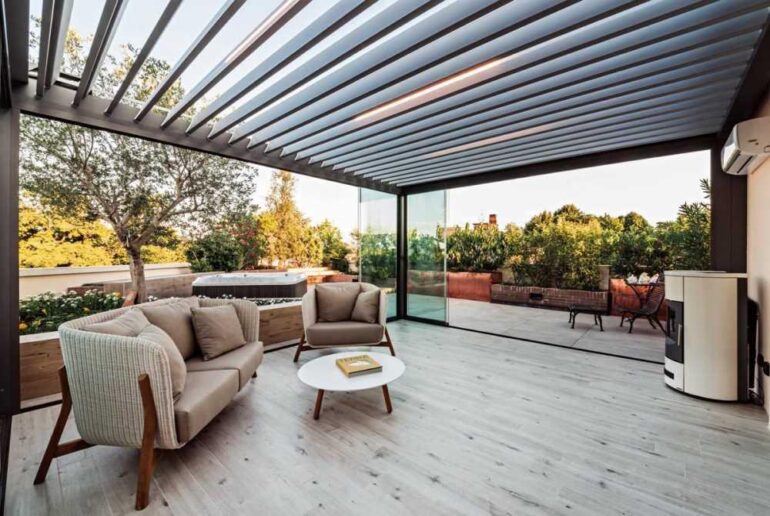
When designing a patio or outdoor space, consider seating arrangements and discussion spots. The settee or chairs should be close enough to talk without yelling but also allow enough room to walk about. A low table for beverages or plates should be surrounded by chairs.
You’ll have a great big bare patch in the middle of the room if you line up patio furniture against the walls of your outdoor room—a sort of “firing squad” design style that doesn’t necessarily work indoors or out. This is ideal if you intend to use the room for dancing or some post-dinner karaoke.
6. Problems with Color
Color design errors arise when either too little color is utilized or the incorrect colors are combined. Cushions with neutral tones, such as white, tan, beige, or grey, are common on outdoor furniture. Colorful pillows and accessories in a few well-chosen or preferred colors are set off by neutrals. If the set is left alone, with no accents, it appears bland or incomplete, as if it was pulled out of the box and then you got preoccupied.
Using too much color, on the other hand, might be a touch overwhelming, but if the colors are complementary, the result can be bright and vibrant.
7. Scale and proportion
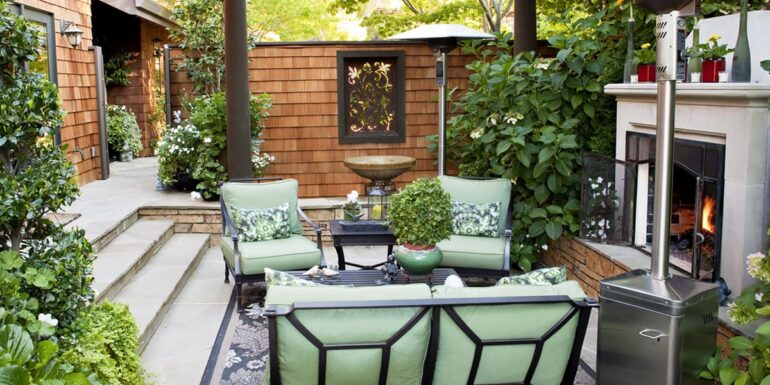
Let’s imagine you have a 12 × 12-foot gazebo for your outdoor room. Fill the area with all of the items that go into it, including outdoor furniture, accessories, and plants. Your outdoor space may appear barren if you only have one tall bistro table, a pair of matching chairs, and an 8-inch pot of calla lilies leftover from Mother’s Day. Minimalism is lovely, but it’s another thing entirely when it’s ignored or poorly thought-out.
Conclusion
Let’s imagine you have an excess of patio furniture and are eager to cram it all into your new outdoor space. There might not be enough room to walk, and everything appears like you’re having a yard sale under a bridge.
The area in a well-proportioned outdoor room should be created for your preferred activity. Dining, lounging, and entertaining are all possibilities. How about a game of badminton on the spur of the moment? I wish you luck with that. Select furniture that is appealing, functional, and appropriate for the room. Smaller things, whether they be potted plants, sculptures, or other sorts of garden art, should be put in front of larger ones at first.

